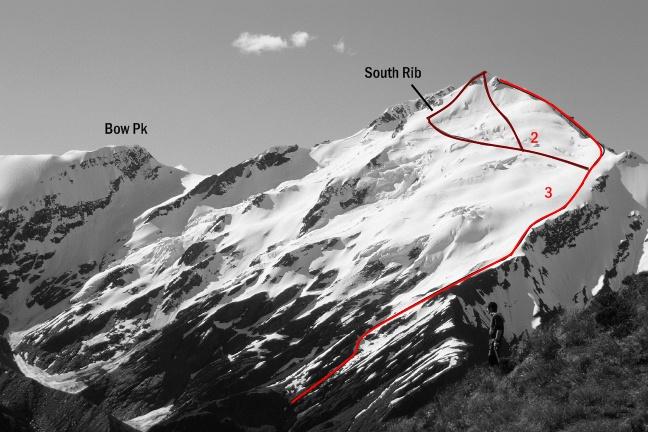Maybe the person who named Barff was sick of mountains when they chris-
tened it. From Aspiring Hut Barff is one of the prettiest peaks in the park and is a joy to climb. Being of small stature and on the Main Divide it is one of the first peaks to be cloaked in West Coast clag.
It was first climbed, solo, by Gordon Speden on Christmas Day, 1929. What a great Christmas present that would have made.
From Liverpool Bivouac
Routes
| Reference | Title | Grade | Length | Pro | Quality | Alert | Operations |
|---|---|---|---|---|---|---|---|
| South West Ridge, III,2 | III,2 | 0m | |||||
|
The South West ridge is a straightforward mixed climb leading from Arawhata Saddle to the lower of the twin summit towers. The prominent step on the ridge above Arawhata Saddle (sometimes called Bow Peak) may be traversed, or turned on the Arawhata side. The easiest route on the higher (eastern) of the twin summit cones is on the north-western side. Time to the summit is about five to six hours.
|
|||||||
| South Face, III,2 | III,2 | 0m | |||||
|
This broad crevassed snow face is reached by traversing towards Arawhata Saddle for about half an hour, until suitable access to the snowfield is found. An easy snow climb then leads to the rocky summit cones. This is probably the quickest route on Barff and would take three to four hours in good conditions. Large schrunds which have developed in recent years near the top of the face may be difficult to cross.
|
|||||||
| North Ridge, III,4 | III,4 | 0m | |||||
|
The North Ridge is a much more demanding climb than any of the other recognised routes on the mountain. To get to the North Ridge use access routes from Matukituki Saddle the ridge consists of easy rock and snow as far as its junction with the ridge separating the Arawata and Waipara watersheds. Three prominent buttresses follow. The first is climbed by a steep rock couIoir to gain a snow ridge above, from where an easier mixed section leads to the second buttress. This is the crux of the climb as it overhangs slightly at the bottom and although the rock is sound, there are few holds. Brown and Hutchins climbed it direct but a break in the west side may offer an easier route.
|
|||||||
